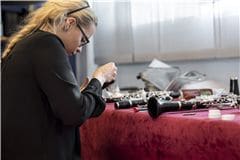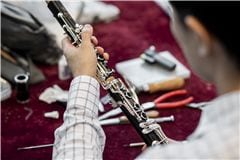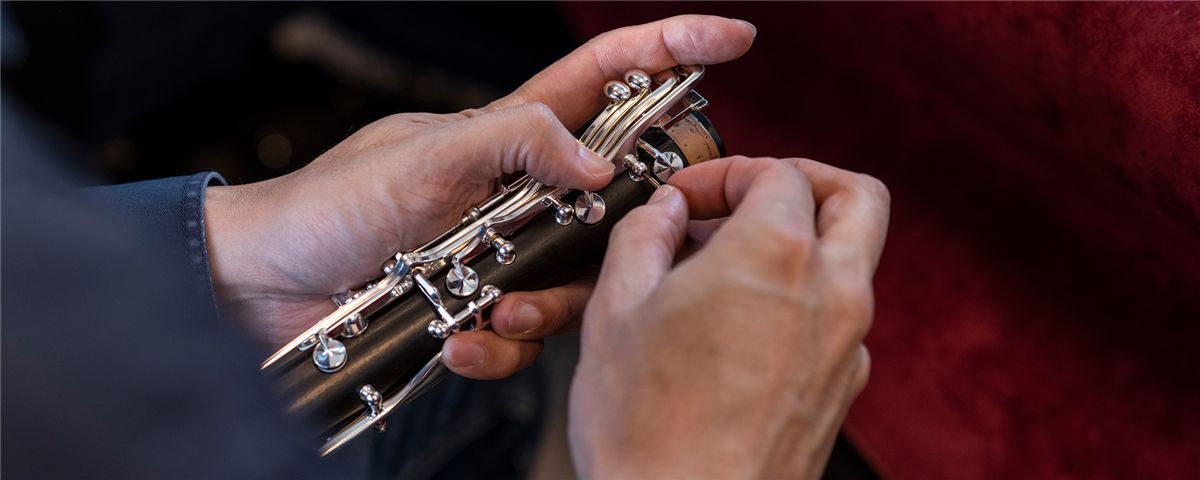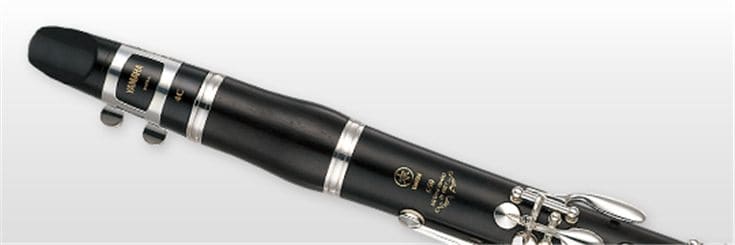New faces of Yamaha Atelier Hamburg
New faces of Atelier Hamburg

A few months back we had two new additions to the Atelier Hamburg team, Marlene Leuchtmann and Masafumi Fuke, both of whom are woodwind specialists and will be working on instrument development as well as supporting artists with their needs.
Masafumi brings with him a great deal of experience from Japan where his main instrument focus was for flute and oboe. Marlene has been working in the Atelier for the last 4 years as an apprentice where she worked closely with Isawo Miyachi before taking over. Marlene and Masafumi join Jonas, our saxophone and bassoon specialist, to complete the woodwind team.
In January we said goodbye to Isawo Miyachi who returned to Japan after a stay of 6 years in Europe. He is still an integral part of our global woodwind team and has joined the Design Section where he will utilise his valuable experience gained in Europe to develop our woodwind instruments further in the future.
We’d like to take this opportunity to thank Isawo for his work in Europe. Read the interview below to learn more about Marlene and Masafumi’s careers and experience with Yamaha.
Interview to Marlene Leuchtmann
What is your musical background and how did you become interested in being a woodwind technician?

I started learning an instrument at a very young age. When I got older, I still loved to play, but I needed a new instrument, so I went to a workshop to buy a new clarinet. It was fascinating for me to see the technicians and their work with musicians and instruments, so I basically decided at the age of 13 that I wanted to do exactly that.
With this in mind, I went down the path of musical studies in my high school and worked in several workshops as an intern trying to find the most suitable place for my training. The last workshop I worked in was Yamaha’s Atelier in Hamburg, and I decided that this was my "place to be". This is my passion and since I started working at Yamaha in 2016, I have been focused on this profession each and every day.
What’s the feeling like after you’ve made adjustments to an instrument and you’re going to hear them for the first time?
The moment before an artist begins to play is still a little scary. You try to remember every step and all the little changes you made to the instrument. And even if you are very experienced and have made the adjustment properly, the second before the first notes are played, you have the heartbeat of a marathon runner.
Is there anything special you learned from your time with Isawo on clarinets?
Isawo was my teacher and my mentor. He taught me everything he could in a relatively short space of time. The clarinet and its specialties really do have some binding characteristics. We travelled, visited musicians and carried out repairs and modifications together. For some weeks we saw each other more than our families. But it was worth it.
When he had to return, I learned everything he had done for our artists. Isawo basically taught me everything there is to know about clarinets. As I know, many of you miss Isawo as a person and as a technician, as much as I do, I will do my best to fill the big shoes he left behind. I hope that my work as a technician will be as valuable to you as his was.
What are you working on at the moment?
One of my latest projects is experimenting with our barrels. I try to use new materials like carbon fibre together with different metals to create different sounds and ways of reaction and projection. But I am always open-minded and interested in developing different modifications for our artists. If you have a wish for a modification of your instrument, together we will find a way to make it work perfectly for you. So please do not hesitate to contact me.
Interview to Masafumi Fuke
What is your musical background and how did you become interested in being a woodwind technician?

As my mother used to be a music teacher at a junior high school, I naturally started playing instruments, piano and flute. Then I took lessons from a flutist who was a kind of flute nerd, he often showed me his collection of flutes. I think it was a light bulb moment for me to get into flutes. Fortunately, I was able to take part in Yamaha’s internship program at the wind instrument design section, I decided to join Yamaha to work in wind instrument design.
What’s the feeling like after you’ve adjusted an instrument and you’re going to hear them for the first time?
I have butterflies in my stomach whenever I make changes to an instrument and listen to the sound. A change would get a different result depending on each artist, because wind instruments have strong feedback to player’s playing feeling, the sound is generated by this interaction between a player and an instrument. I find it difficult to work on but also very interesting. In a sense wind instruments are very human-like. All wind instrument technicians are coming and going between science and humans.
After living in Hamburg for 8 months, do you have a favourite place to go to?
I like to go to Stadt Park where I can refresh myself with fresh air, greens and so on. I think there are a lot of green areas even though Hamburg is a big city. I can also see many traditional designs in the city as well as in other cities in Europe. Japanese cities are relatively modernized and there are less traditional things because we have had many disasters and have had to rebuild cities again and again. Of course, I love Japan, but I’m pleased with the life in Hamburg surrounded by this environment.


